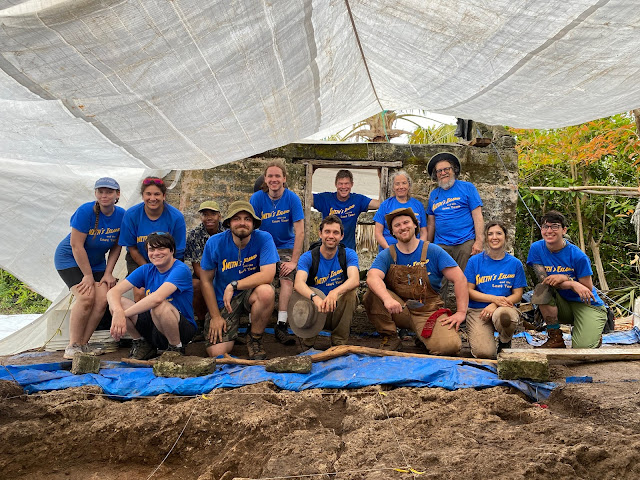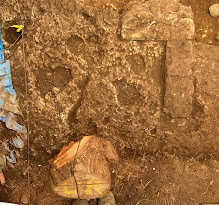Update #1 From The Field (Ewan Shannon)
This dispatch is by Field Supervisor Ewan Shannon.
Despite an impressive amount of rain, our team has answered the challenge equally impressively, and we have plenty of progress to show for our first two weeks. As our crew members settle into the rhythm of the site, we have been pairing them up so that those who are new to archaeology can have the benefit of an experienced partner. These pairs have been working well together, and for the most part have taken on good site practices fairly quickly. For example, sometimes new diggers can be prone to “bowling” their units (having their walls taper as they go down rather than being nice and vertical) but that’s not the case for this group! I’ve only had to ask people to fix their walls a couple of times. Straight walls mean a happy supervisor.
Picking up where we paused at the end of last year, we know we have a large and deep feature in the northeast of our site; one of our goals has been exposing it in its entirety so we can get to the bottom of it- literally. Our running theory is that it’s some sort of cellar or storage area, with a possible hearth right next to it. In general, a rule of thumb in Archaeology is that you work from the “known” and follow it into the “unknown”, and that has been our approach as we decide where to assign our team on site.


As for our progress: As of today, we have expanded our existing site by 27 one meter- squared units, and assigned 58 contexts (distinct layers of soil in a unit) that are either complete or in progress, with even more artifact bags sent to the lab for artifact washing and databasing. Most significantly, we have uncovered 40 new post hole features of various sizes, as well as the flat square cut stone area previously mentioned and a long trench-like feature that is emerging east of the Locus A pit.












.jpg)
Comments